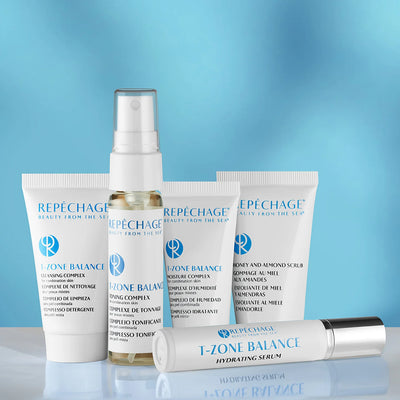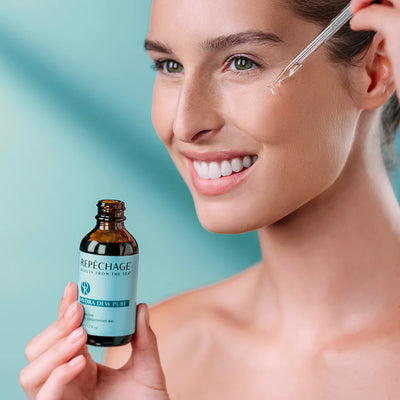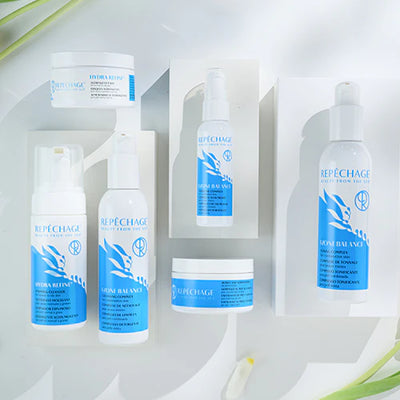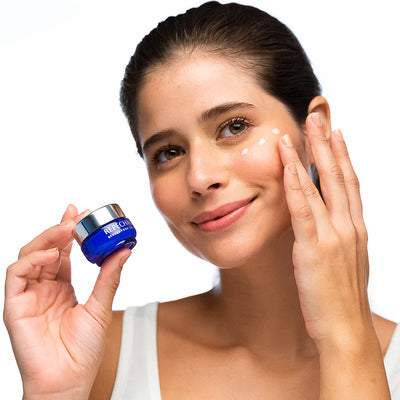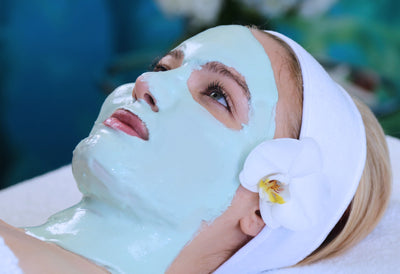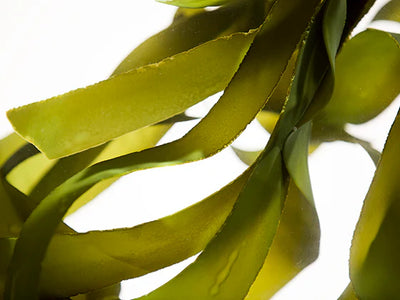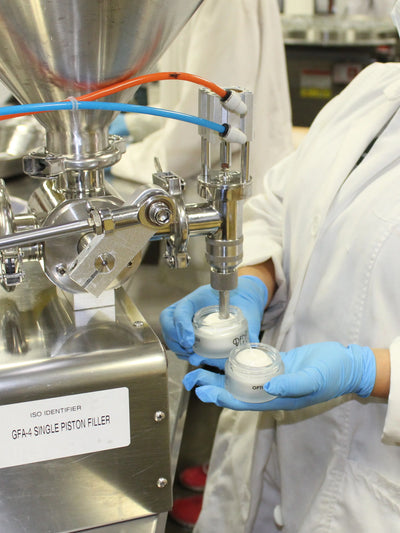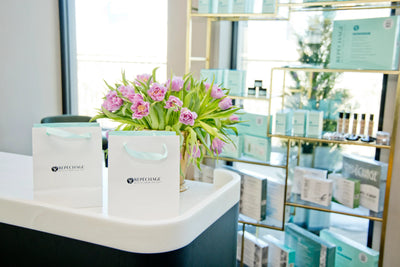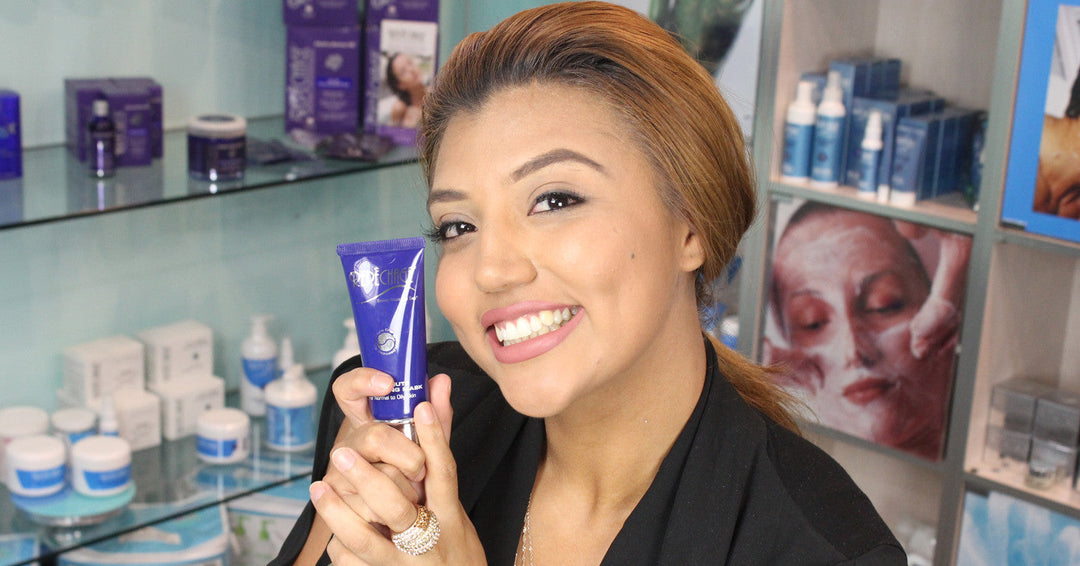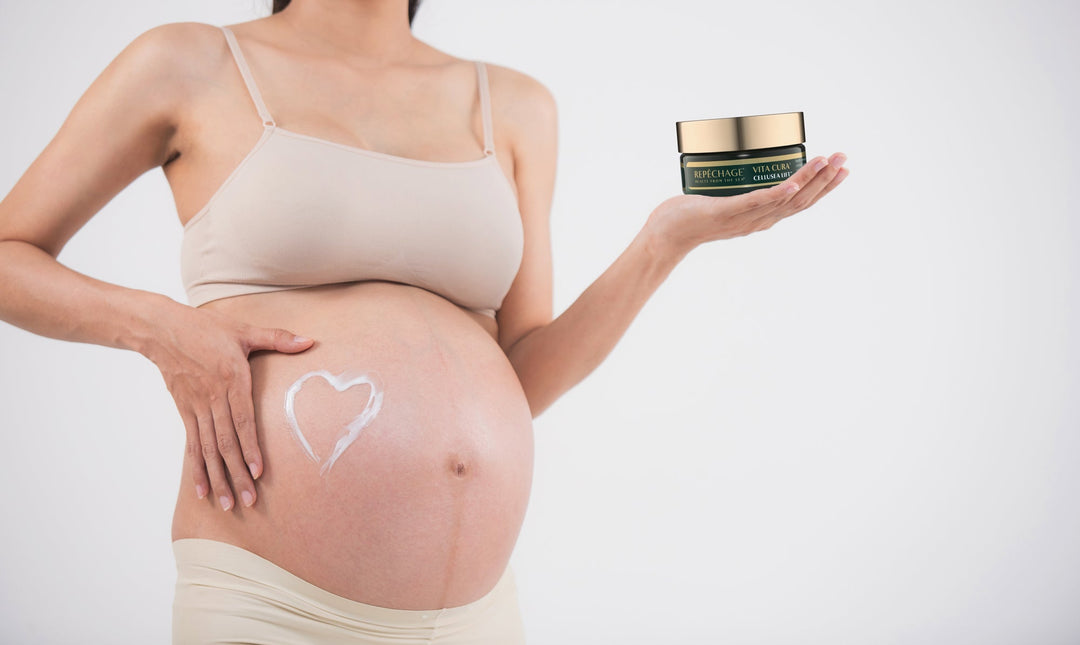Skin Buffering: Great Alternatives to "Retinol Sandwiching" for Gorgeous Skin
The idea of “retinol sandwiching”, meaning applying moisturizer, then a retinol skin care product, then another moisturizer, has trended the past few years, and with mixed results. The bottom line is that OTC retinol products, (skin care creams with retinol that you can buy without a prescription) may have their effectiveness diluted by having to seep through a moisturizing cream to get to the skin.
The need for a buffer to help reduce the irritation of retinols is a continuing conundrum for those looking for the most beneficial products and ingredients for their skin. There are things you can do to help reduce the irritation of retinol creams without greatly compromising efficacy. And, there are even alternatives to retinol you may want to consider if the negative effects are too outside your comfort zone. Here, we’ll look at the good, the bad and the ugly about retinols, ways you can buffer skin, and alternatives such as advanced peptides that could work better for your skin’s needs!
What is Retinol?
Here’s a quick review: Retinol and retinoids are oil-soluble molecules belonging to the family of A vitamins. This vitamin plays an important role in infancy when we develop organs, the nervous system and our limbs because it has an effect on biological development by regulating cell division and growth.
Vitamin A cannot be synthesized by the body however. It has to be supplied. Naturally, it is present as retinyl esters and beta-carotene which are converted to retinol before absorption from the intestine for storage in the liver.

When applied topically the skin cells undergo an increased turnover. Retinoids have also been found to reduce fine lines and wrinkles by increasing the production of collagen. They are also said to increase new blood vessels, which can improve skin tone, and help fade hyperpigmentation and rough spots. The downside? It takes three to six months of regular use before improvements in wrinkles are apparent—and the best results take six to 12 months. Another downside: Retinols should ideally be used at night as it is unstable to air and sunlight. In addition, the increased turnover of skin cells leaves your skin more sensitive to sunlight while using retinol. Therefore, the use of a high protection sunscreen is recommended during the daytime
The super downside? The most common and frequent adverse effect of topical retinoids are known as ‘retinoid reaction’, which can manifest on skin as a burning sensation at the sites of application, inflammation and peeling. It is thought to be caused by retinioids releasing pro-inflammatory cytokines in the skin.
How to Create a Skin Buffer
Skin buffering is a technique that has been recommended to help reduce the irritation of retinol skin care products. With this, the retinol skin care is applied with a moisturizer to help reduce the aggravating effects. “Retinol sandwiching,” meaning applying a layer of moisturizing cream before the retinol product, followed with an additional layer of moisture, has been recommended to create a full layer of buffering The main complaint of “retinol sandwiching” has been that it dilutes the efficacy of the retinol too much, lessening its effects,
Buffering Alternatives:
Applying a light fluid serum under the retinol product can hydrate and provide skin with essential nutrients to help support the skin barrier without using a heavy cream. There are several ingredients that you can look for in serums that can help bolster the skin to reduce retinol irritation.

Pure Seaweed extract can provide the skin with essential elements needed to support the appearance of healthy skin. Repêchage C-Serum® Seaweed Filtrate is a dermatologist tested intensive concentrate of nutrient-rich, sustainably-harvested Laminaria Digitata Seaweed extract. Short for cyto-serum, C-Serum® is rich in 12 vitamins 18 amino acids and 42 trace elements and minerals.
Sodium Hyaluronate and Hydrolyzed Sodium Hyaluronate (Hyaluronic Acid) are two forms of Hyaluronic Acid with different molecular weights. Hyaluronic Acid is a natural moisturizing polysaccharide prevalently in the skin that is known to hold 1000X its weight in water. When different molecular weights of Hyaluronic Acid are used in a formulation, it can have a synergistic effect, performing multiple skin care functions to enhance skin moisturization while helping prevent skin irritation caused by retinol and trans-epidermal water loss. To help combat dry, compromised skin from retinols, two forms of Hyaluronic Acid are found in the Repêchage Hydra Dew Pure ™ Moisture Lift Serum.
Niacinamide (Vitamin B3) Is known to have numerous proven skin benefits, including reducing the appearance of oil, helping improve the overall appearance of skin and texture, reducing the appearance of fine lines and wrinkles, dark spots and discoloration and increasing the appearance of firmness and elasticity. Layering a lightweight serum with a high level of Niacinamide has been recommended to help buffer the effects of retinol. The Repêchage® Vita Cura® B3 Serum Complex formulated with Niacinamide, Laminaria Digitata Seaweed extract, and moisturizing Hyaluronic Acid, and is clinically proven to reduce the appearance of wrinkles by 58% and reduce the appearance of pores by 41%.*
The Peptides Alternative
A possible alternative to retinols are peptides (for the true skin savvy, there is a deep dive into this topic in Lydia Sarfati’s blog for the skin care professional here.)
What are Peptides?

Peptides are small molecules consisting of at least two amino acids linked together. Depending on the amount and type of amino acids connected, peptides form specific structures. One of their functions is to act as messengers to other cells, which influences how the skin functions, such as with increased collagen and elastin production, which in turn, influences how skin ages.
Peptides have different mechanisms of action on how to improve the condition of your skin when applied topically. Palmitoyl pentapeptides, such as Matrixyl will help skin appear firmer, for example. Soy oligopeptides and rice peptides can help reduce the appearance of wrinkles.
Peptides have several positive advantages compared to ingredients such as retinol. Peptides take a relatively shorter time to have an effect when compared to retinols. Further, peptides are much less drying and irritating than retinoids, thus being ideal for those with dry or sensitive skin. Because they do not cause sun sensitivity, they can also be applied both day and night. In addition, the variety of ways that peptides benefit skin health means you can choose which types of peptides that benefit your specific needs.
For hydrating, firming and brightening, Repêchage Triple Action Peptide Serum and Triple Action Peptide Mask contain four firming peptides with Seaweed extracts to drench skin in moisture.
For brightening, the Repêchage Biolight® Brightening Day Cream contains exclusive Laminaria Digitata Seaweed combined with three peptides to brighten the appearance of the skin.
To reduce and smooth the appearance of fine lines and wrinkles, the Vita Cura® B3 Elixir Complex uses four peptides, Seaweed extract, Niacinamide and two forms of Hyaluronic Acid.
What are some of the ways you buffer your skin from irritation? Let us know in the comments.


